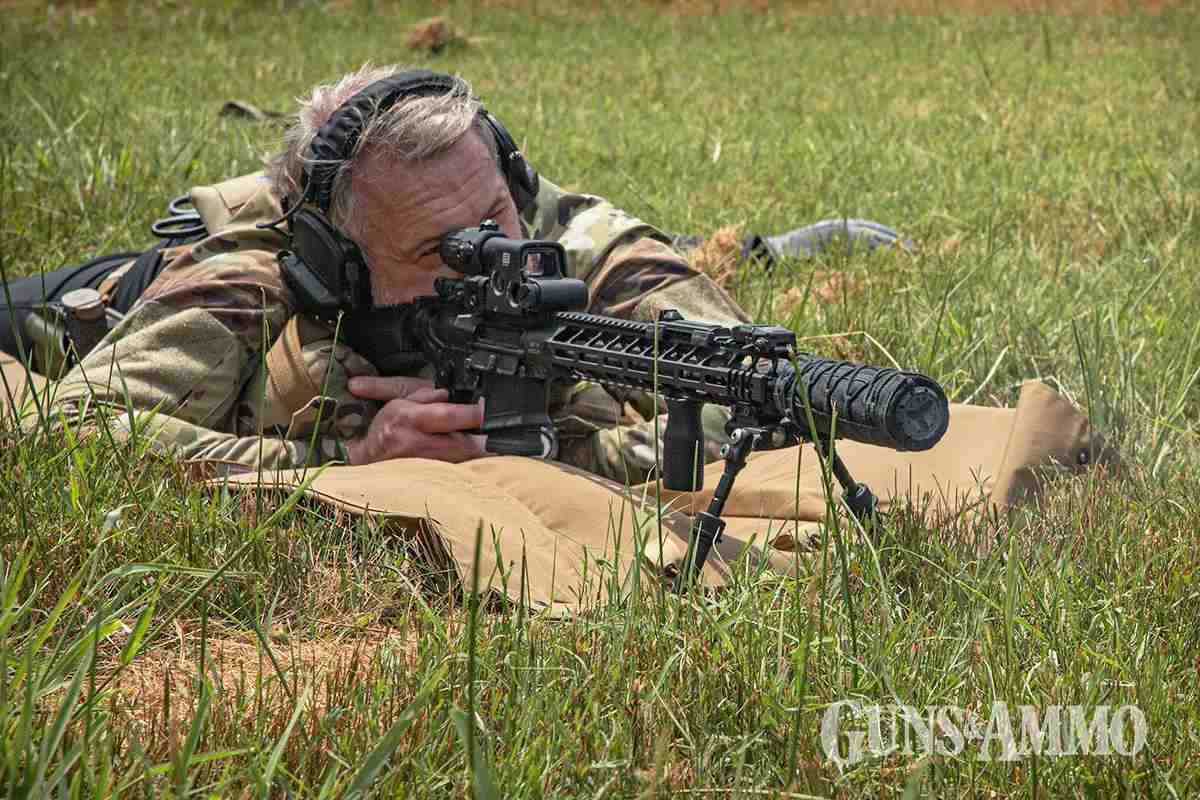What is the best cartridge when choosing a personal-defense rifle? Ballistic-gel results, with their trails of hydrostatic shock as pretty as a peacock feather, only tell a portion of the story. For some more concrete testing, we can observe what happens when rubber meets the road—more specifically, when a bullet meets inches of fat, or a shoulder bone so thick they call it a “shield” on mature boars.
In the 1930s, the Eurasian wild boar was introduced to Texas for sport hunting, as this species was smarter, more resilient, and, overall, difficult to hunt. During the 1950s, turning economic downturn, farmers let loose livestock pigs, which became feral. These feral hogs bred with Eurasian wild boars and produced the species of wild hogs most prevalent today. Every year, nationwide wild hogs cause an estimated $1.5-$2.5 billion worth of damage to agriculture, property, wetlands and waterways, as they adversely affect every ecosystem they inhabit. In Texas alone, they inflict approximately $500 million worth of damage annually.
Because of this, they are considered an invasive species and can be hunted year-round with very few limitations regarding how they are put down. Whereas species like whitetail deer are subject to fair-chase regulations (e.g., hunted during certain seasons and during certain daylight hours), hogs are often hunted during the night with thermal optics, or from the air, via helicopters. Basically, any way they can be safety and legally dispatched remains an acceptable hunting method.
But compared to other big game of similar size, wild hogs are far more durable, with a thicker hide, more layers of fat, and a refuse-to-drop-on-the-spot mindset. A fatally wounded hog can run several hundred yards or more before keeling over. Excess fat can plug bullet holes, resulting in a blood trail going dry and making it hard to track the hog without a dog or thermal drone.
Advertisement
For these reasons, hunters often shoulder AR platforms when taking aim at wild hogs. They unload several rounds at a sounder, usually taking multiple shots at each hog, in an effort to put as many in the dirt as possible.
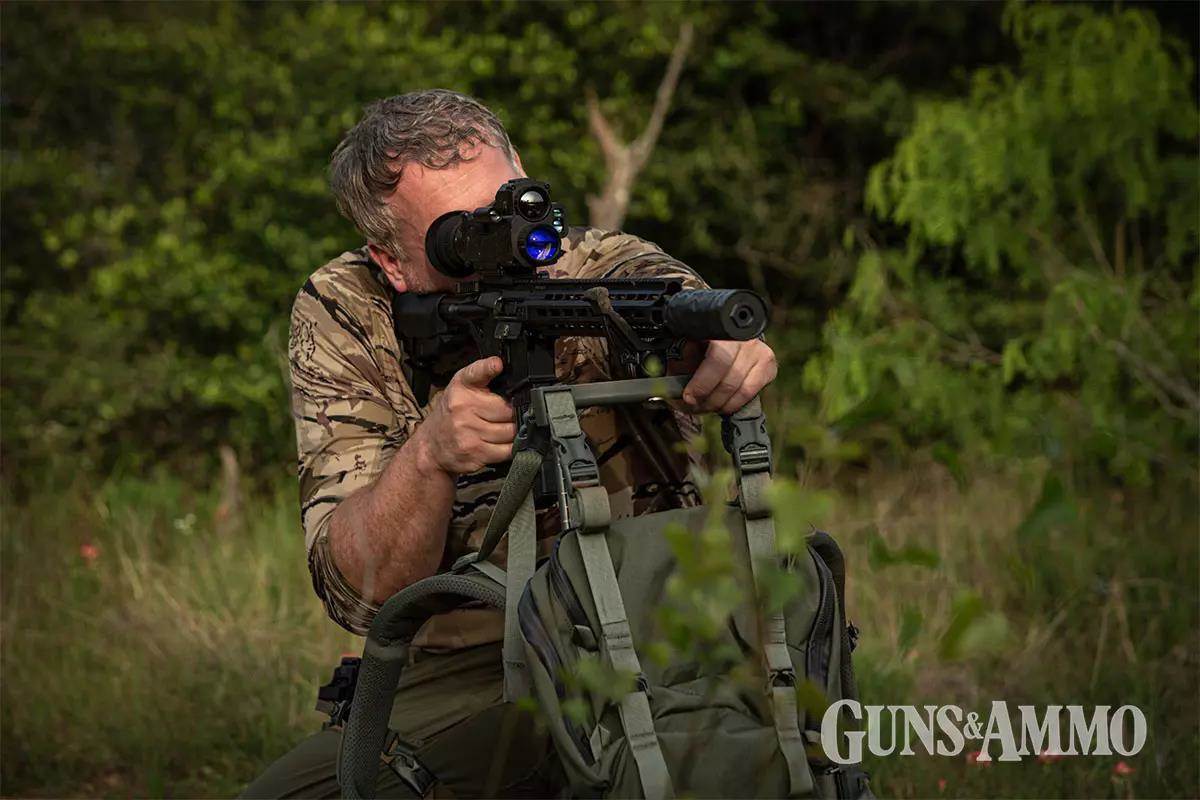
Suppressors are beneficial to hog hunting, as suppressed rounds distort the source of a shot. Not knowing from where the shot originated, wild hogs will run in random directions—versus directly away from hunters—which results in better chances for follow-up shots. However, because of this confusion, hogs can sometimes run directly at hunters—a potentially dangerous situation, as these beasts often have a set of knives for teeth. For such scenarios, as well as recovery situations when the finality of a prone hog is uncertain, hunters often carry a sidearm.
Choosing the best cartridge to dispatch invasive bacon comes down to several factors. Yes, the round needs to perform, but the rifle sending it also figures into the decision. Hunters need to consider the weight of a rifle, as it may be necessary to cover miles when headed afield or recovering a hog. Price and availability of ammunition is also a factor, along with the ability to manage recoil for quicker follow-up shots.
Advertisement
So, the reasons a hog hunter may pick a round are somewhat similar to the specs considered when choosing a SHTF rifle. While certainly not a one-to-one scenario, wild-hog-hunting provides insight to the longstanding debate: What is the best “jack of all trades” AR you should own?
Experience From Exterminatng Hundreds Of Wild Hogs
Ronny Katzenberger is a German native who moved to the United States in 2010 and soon afterward started hog hunting in Texas as a cheaper raw-diet source for his Great Dane. He became enthralled with both the technology and tactics necessary to wipe a field clean of invasive wheat eaters. He started his YouTube Channel, Texas JAGD, as way to share his adventures with family back in Germany.
But over the course of years, Katzenberger grew his subscriber base to over 21,000 amid dropped upwards of 300 Texas wild hogs. From 6.5 Grendel to 6.8 SPC to 450 Bushmaster to 300 Blackout, Katzenberger has shot many calibers at hogs and seen firsthand both the successes and failures.
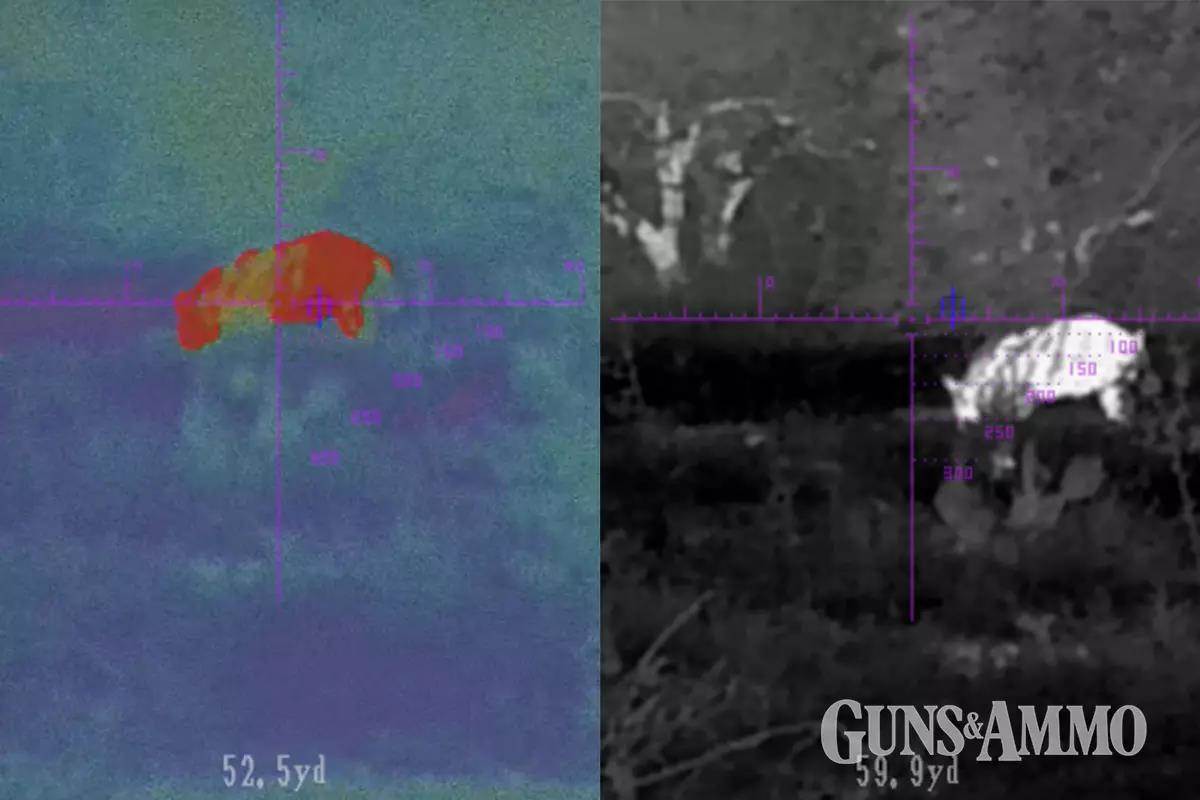
“I was shooting 300 Blackout for quite some time because you’re able to run a 30-caliber projectile in an AR15 platform” said Katzenberg. “I liked it quite a bit because we’re usually getting pretty close to those hogs. But I did start out with .308 WIN and knew about its capabilities, which in my opinion far outperformed those of the 300 Blackout.”
Katzenberger left his 308 setups at home due to weight, until provided a ROAM Red River Ultralight—an AR10 with magnesium receiver and trimmed for weight. Out of the box, the rifle clocks in at 5.6 pounds. “Even with a thermal and a suppressor, it was about as light as an AR-15 and also shot like one,” said Katzenberger. “It truly made 308 accessible for those nights you’re walking through farm fields for hours.”
Except demand for ROAM rifles is high, and the materials rare, with a waiting list out to Fall 2025 at the earliest. For guys like me who carry an Sig Tread 716i, the weight takes a toll. While my 716i is accurate as heck, especially for a gas gun, boasting approximately .750 MOA for my preferred 168gr TSX, when it’s time to take the gun off the tripod and change fields, then sometimes having to take offhand shots—I’m perennially reminded of all the arm days I’ve skipped during my lifetime.
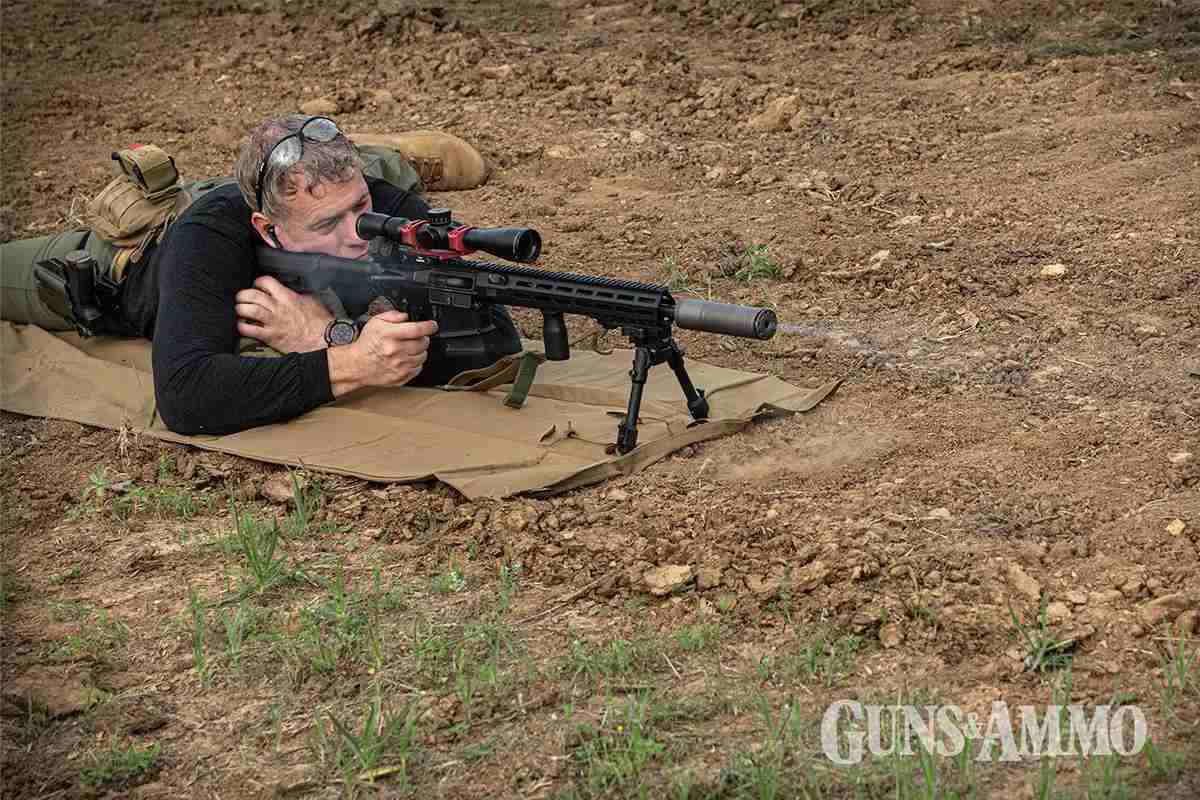
Live-Tissue Testing
Over the past couple years, hosted by Katzenberger, I—along with other guests—have been able to put various AR-platform cartridges to the test on wild hogs in Texas. Below is a breakdown of rounds, followed by a chart detailing velocity and energy.
308 WIN, 175gr, HPBT SMK
The standard designated-marksman round for military overseas, the 175gr Sierra MatchKing is both incredibly accurate and devastating even at several hundred yards.
Results: I watched Mike Mills instantly drop a mature 200-plus sow from 140 yards during an April 2024 Texas hog hunt. Judging from video and exam prior to butchering, he hit behind the shoulder and—because the hog was slightly quartering toward—the round exited the opposite shoulder, obliterating bone on its way out and leaving copper shavings in the meat.
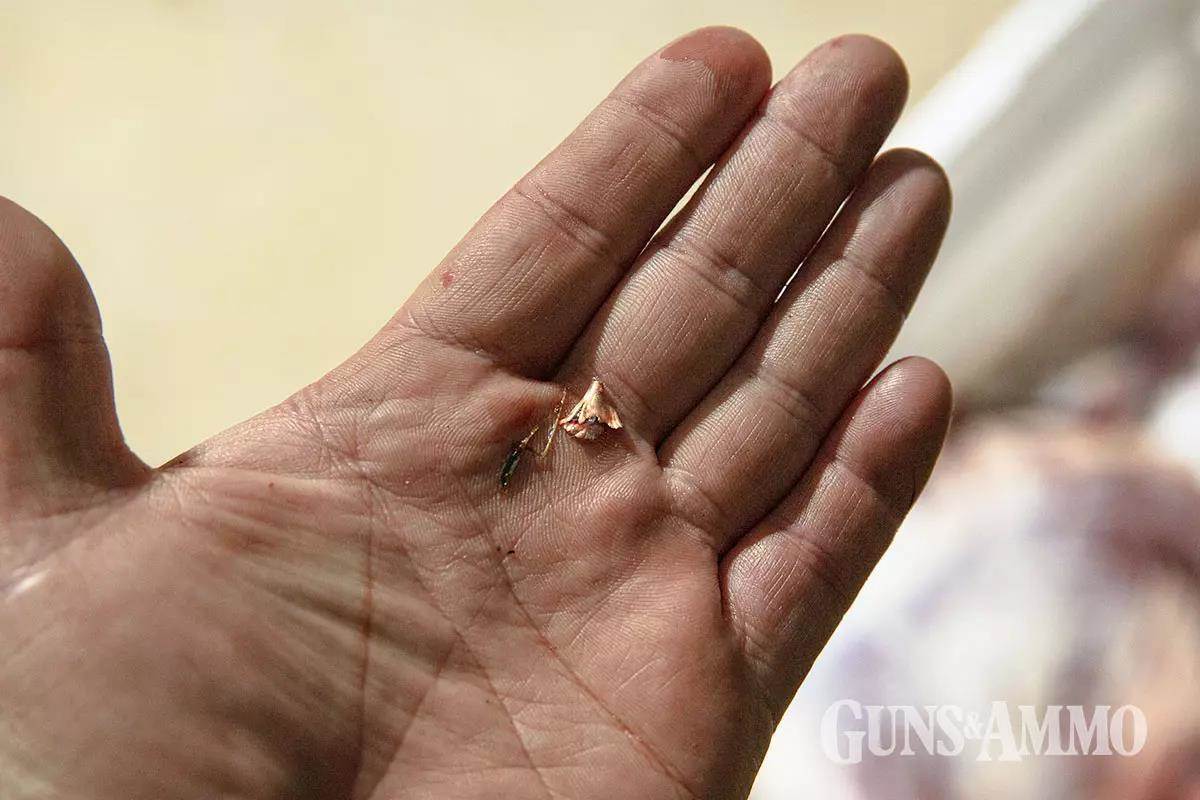
Remington 300 BLK, 120gr COPPER HP
All-copper rounds are known for maximum weight retention and, as a result, massive wound channels.
Results: I’ve shot both deer and hogs with copper rounds and seen firsthand upon field-dressing how destructive these rounds can be. In October 2023 I anchored a wild piglet from 80 yards with a copper bullet that entered neck and embedded itself in the opposite shoulder.
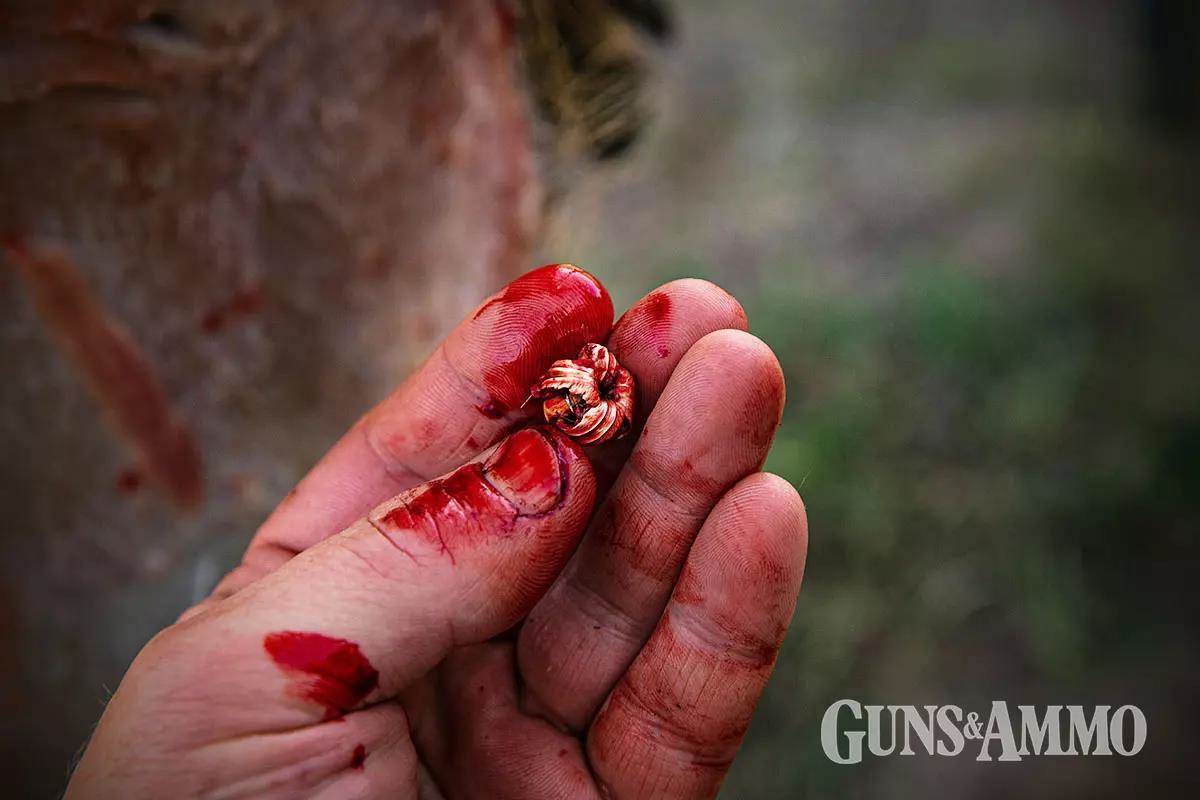
Simmulated Testing
To further test AR15 rounds, I strapped 8mm worth of leather (a substitute for hide) to a butchered wild mature boar shoulder and fired rounds into the shoulder bone.
Winchester M855, 62gr, FMJ
Containing a tiny steel core, the M855 (also called “green tips”) is not allowed at most indoor ranges as it’s considered “armor piercing,” except that attribution remains inaccurate. While they are considered “penetrator” rounds and required for testing when certifying plates to NIJ 0101.06 Level III standards, this cartridge is both inaccurate and unnecessary wear and tear on a rifle.
Results: Quickly entered and exited a butchered hog shoulder with little influence on either meat or bone.
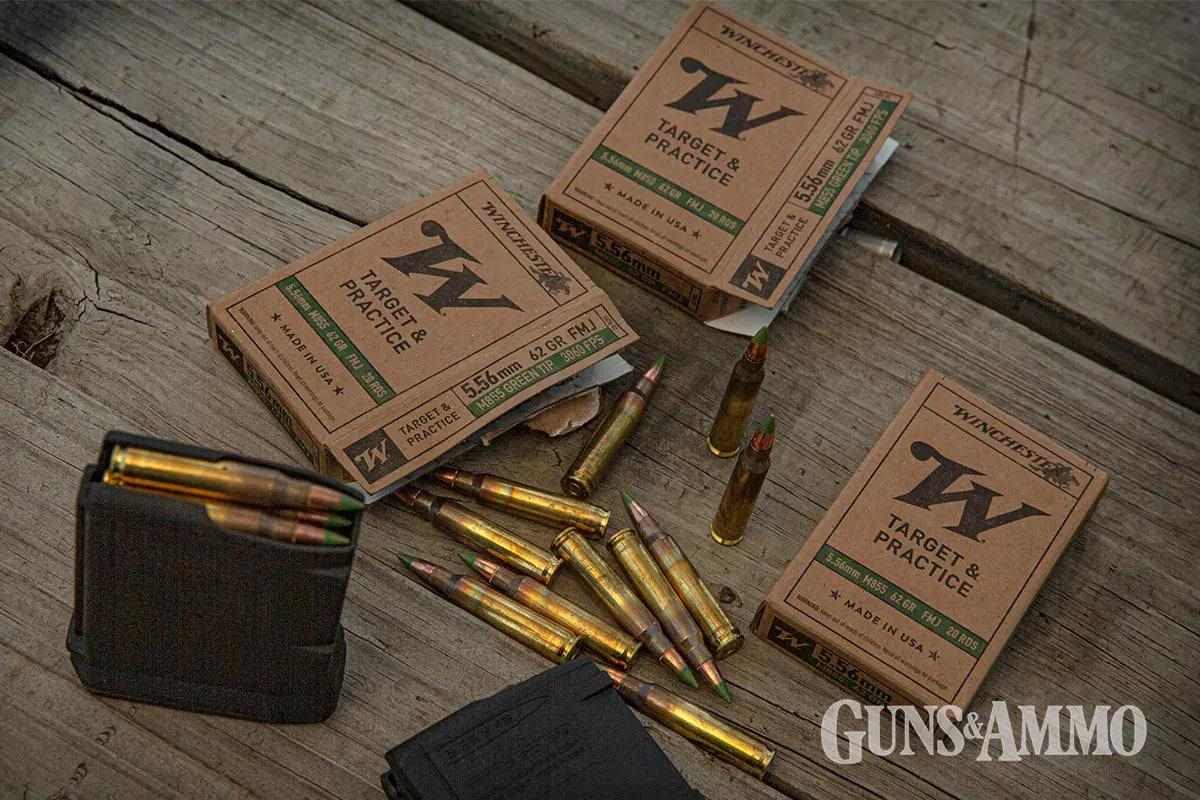
Barnes 223 REM, 77gr, Match Burner OTM BT
The 77gr OTM BT is more widely loaded for military professionals. While most shooters opt for the 77gr SMK, which is renowned for accuracy and overall performance in both military and competitive-shooting applications, I wanted to test a sister company’s offering.
Results: On the butchered hog shoulder, the 77gr OTM BT splintered bone and, even at 100 yards, left noteworthy impressions upon exit. It also left an impression on paper after exiting.
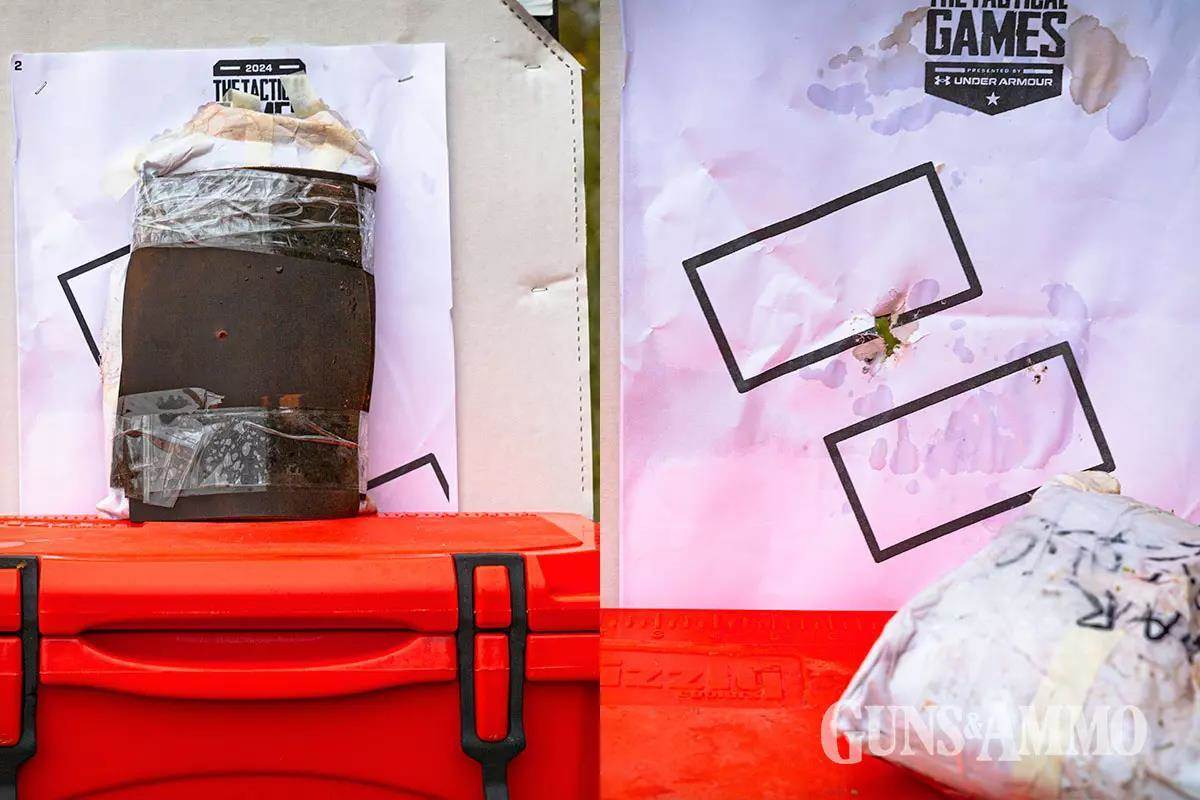
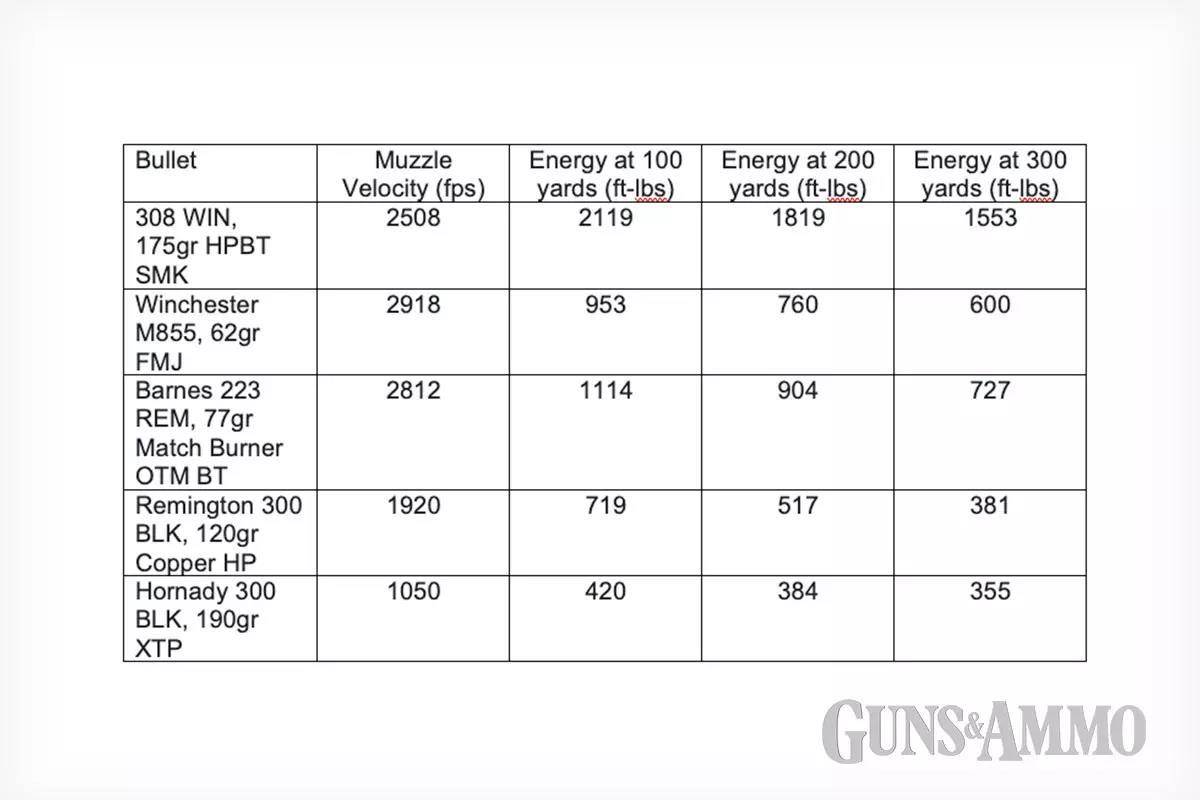
*For context, a 115gr +P 9mm load will produce a muzzle velocity of 1125 fps, with energy (ft-lbs) in the ranges of muzzle to 25 to 50 yards varying as follows: 323, 297, 276
What Hog Hunting Does And Doesn’t Tell Us
Firstly, despite referring to a mature hog’s shoulder blade as a “shield”, that bone is very much not a 1-to-1 for any level of armor plates or Kevlar vests. Ceramic plates, for example, disperse energy by catching and shattering the bullet upon impact, then absorbing the force via tiny bits of fractured ceramic. Kevlar vests are constructed from many layers of woven synthetic fabric that, when shot, disperse energy throughout these multiple layers.
A hog’s shoulder bone is simply that: bone. A single hard layer.
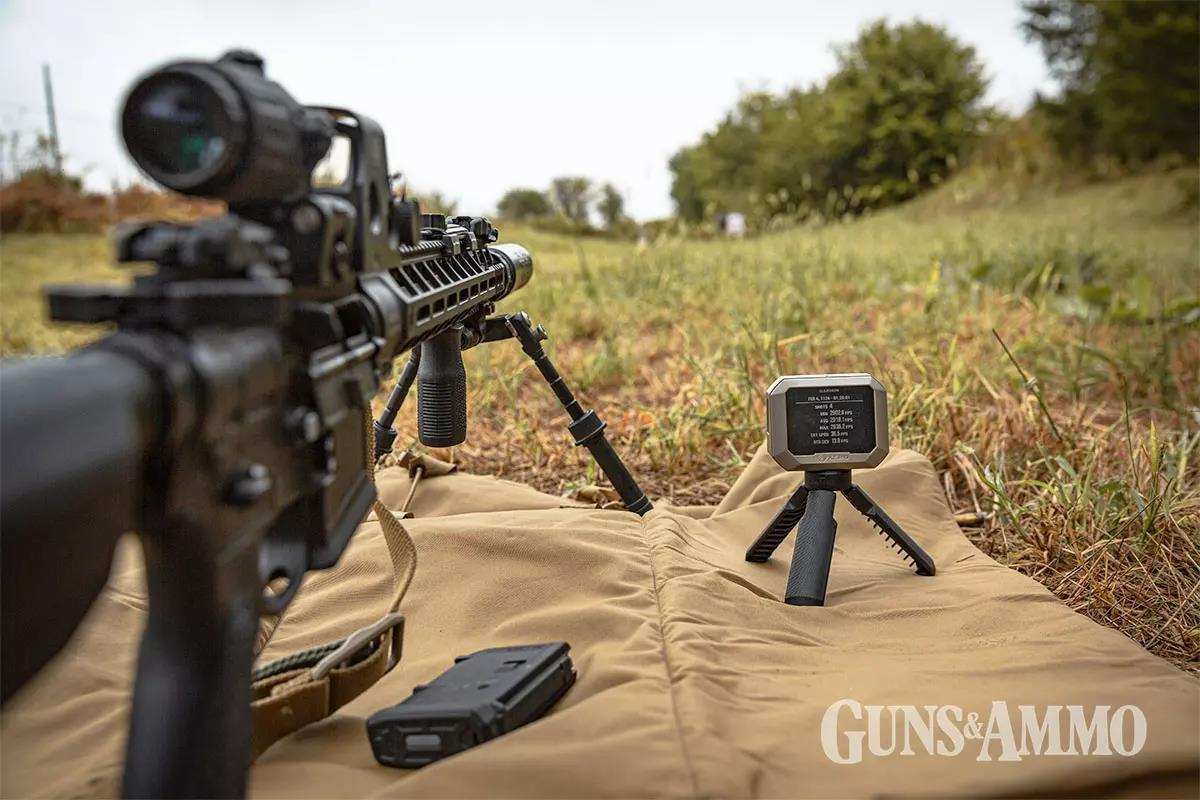
But both caliber and round choice play a pivotal role. “Purpose” is the key word. In hunting, just because one round performs well on one species of big game, that does not mean it will accomplish the goal on another animal. Example: While an all-copper 168gr 30-cal bullet may dispatch a 700-pound bull elk, most backcountry hunters, if carrying a sidearm for protection against a grizzly bear of the same size, may likely opt for 220gr hard-cast 10mm bullet. An all-copper round of the same size will not penetrate the hard bone and muscle of a charging grizzly, whereas a hard-cast bullet made from a lead alloy has a greater chance to do so.
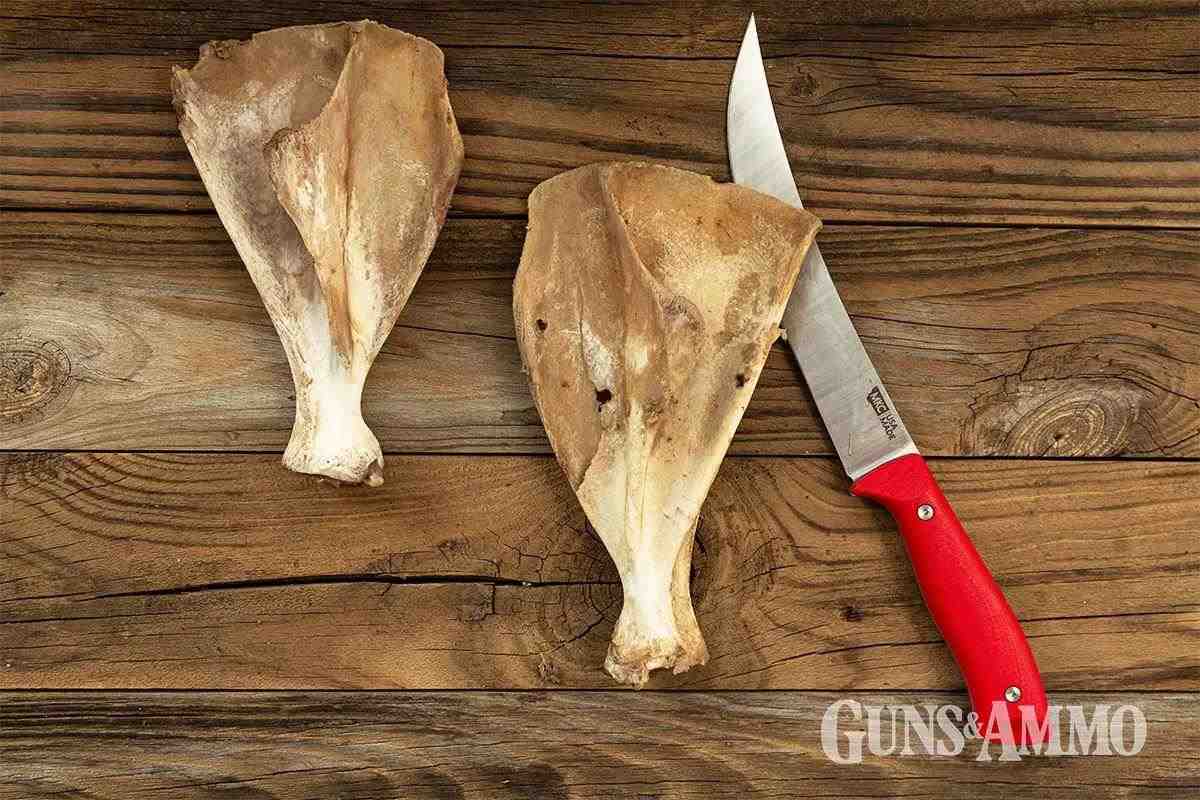
Similarly, while the 6.5 Creedmoor—because of its higher ballistic coefficient—is generally considered superior compared to the 308 WIN at extended distances (800-plus yards), more than one hunting guide has shared how they lose more deer to this round because, though flat-shooting, it has the potential to fail to produce a large-enough exit wound to leave a trackable blood trail. So, while the bullet may have vaporized lungs and other internal organs, that mush, in conjunction with strands of caul fat, may very well plug the hole. So if the game does not drop immediately, and instead runs off, hunters might spend hours on hands and knees, searching for drops, playing the guessing game.
During an April 2024 Texas hog hunt, our party lost a mature wild boar shot with a 6mm ARC from 200 yards. We heard impact (even later reviewed recorded thermal footage to confirm broadside placement), but lost the blood trail. After hours of looking into the early morning, we came to peace with having donated to the coyote-community food bank.
But while the factors for choosing a hunting round—regardless of targeted species—may vary from a personal-defense round, the process returns us to the same word: “purpose.”
The Correct Answer Is “D, All Of The Above”
Mike Mills, host of the YouTube Channel Tactical Considerations, is retired Army special operations, 2nd Ranger Battalion, now serving as a sergeant in Arizona law enforcement. He runs a patrol team, has served as a firearm and medical instructor for years, and hunts to fill the freezer whenever possible.
“When you’re dealing with a heavier hitting slug,” said Mills, “depending on your distance, any time you can deliver more energy, the better off you’re going to be for that target.” (Refer back to our energy chart for more details.)
“The 300 Blackout to a certain distance delivers a very high energy level,” said Mills. “It’s also great to run subsonic if you’re into that as well—so nice and quiet with a suppressor whereas the 5.56 is going to fall short of the energy delivery.
“When you get into something like a .308, where you’re delivering a lot of muzzle energy at far distances.”
Mills also mentioned another key factor on decision making: ammo availability. The 5.56/.223 is now, and likely for a while, easier to obtain and at a lower cost compared to other AR-platform options.
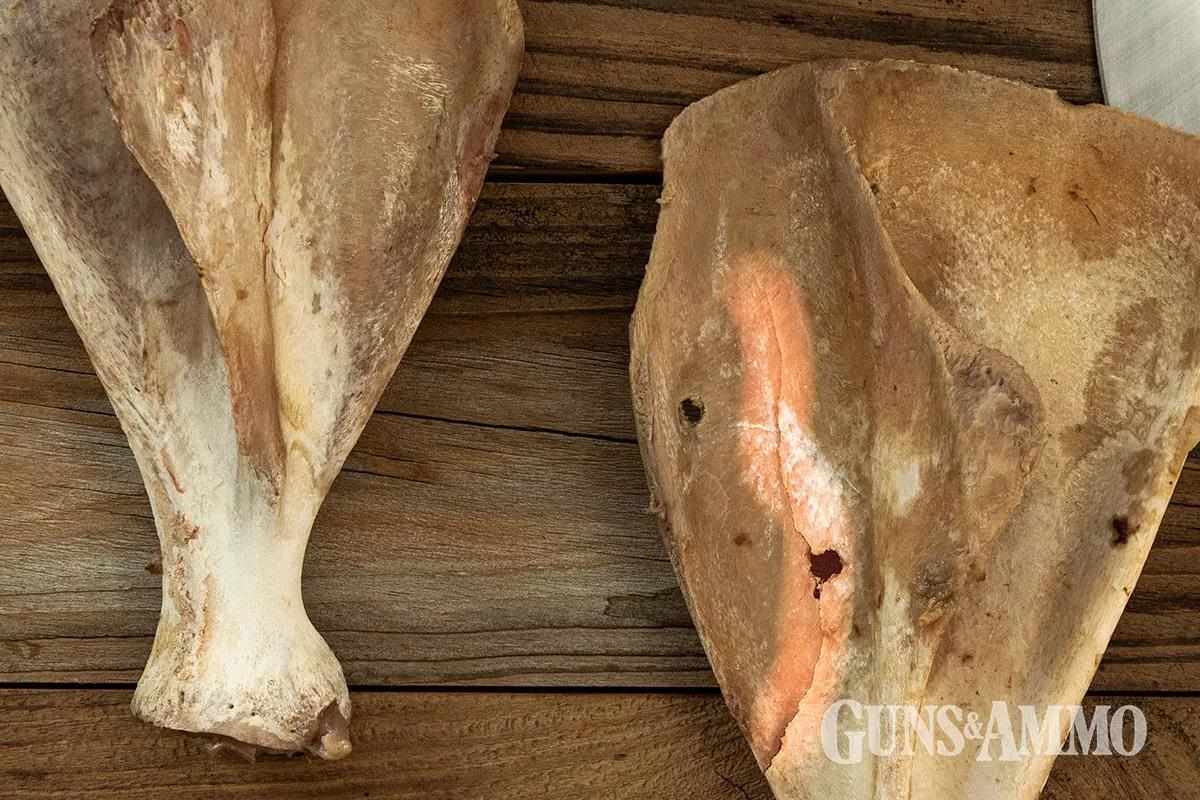
“But everything that you have should be purpose driven,” said Mills. “For a home-defense rifle, a 300 Blackout is great, but how far do you want to go? If you want to really reach out and deliver energy, then 308 or something like that will deliver.
“But if you have to buy one, yeah to be a little bit more all around and you still want to reach out to like 550, 600, 675 yard, then you may want to get DMR-style setup for a 5.56, especially depending on the projectile you’re using.”
Still, Mills comes back to one central theme, that one word, as it applies to each of our unique circumstances: purpose.
“So why not have a 300 Blackout? Why not have a 5.56? Why not have a 308?” said Mills. “Because they all fulfill different roles at different times. Each has a purpose.”
Reach out to me on Instagram (@WildGameJack) with any questions or comments.
Sound Off
Interested in more field testing? Email your thoughts to [email protected] with the subject line “Sound Off”.
Read the full article here


